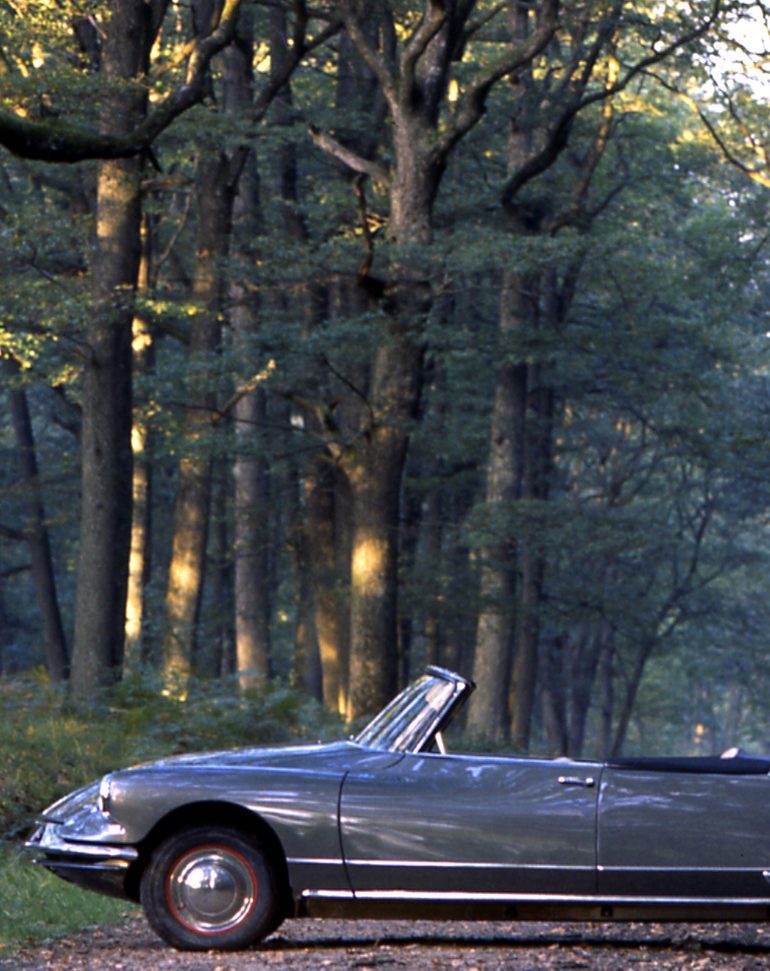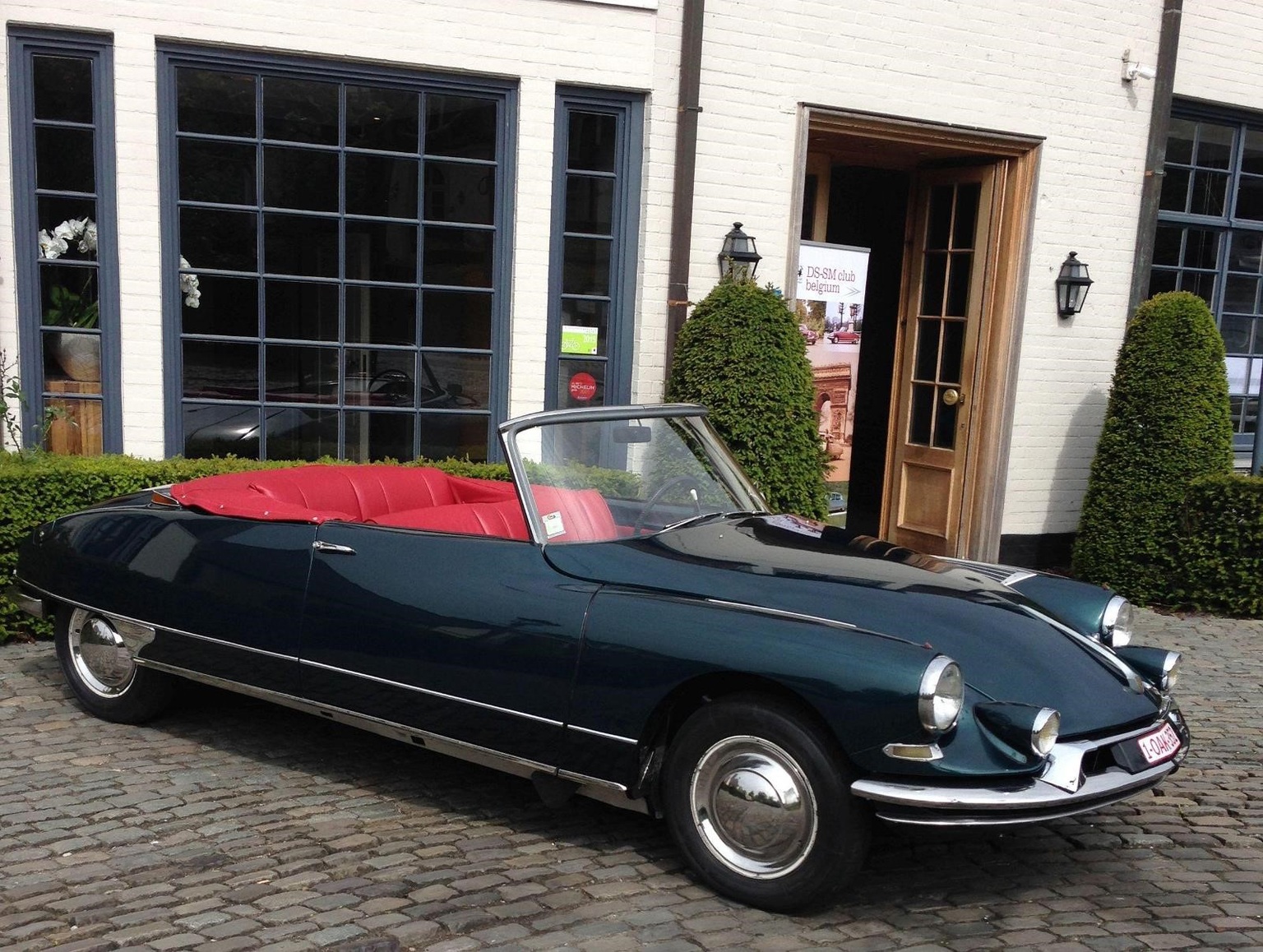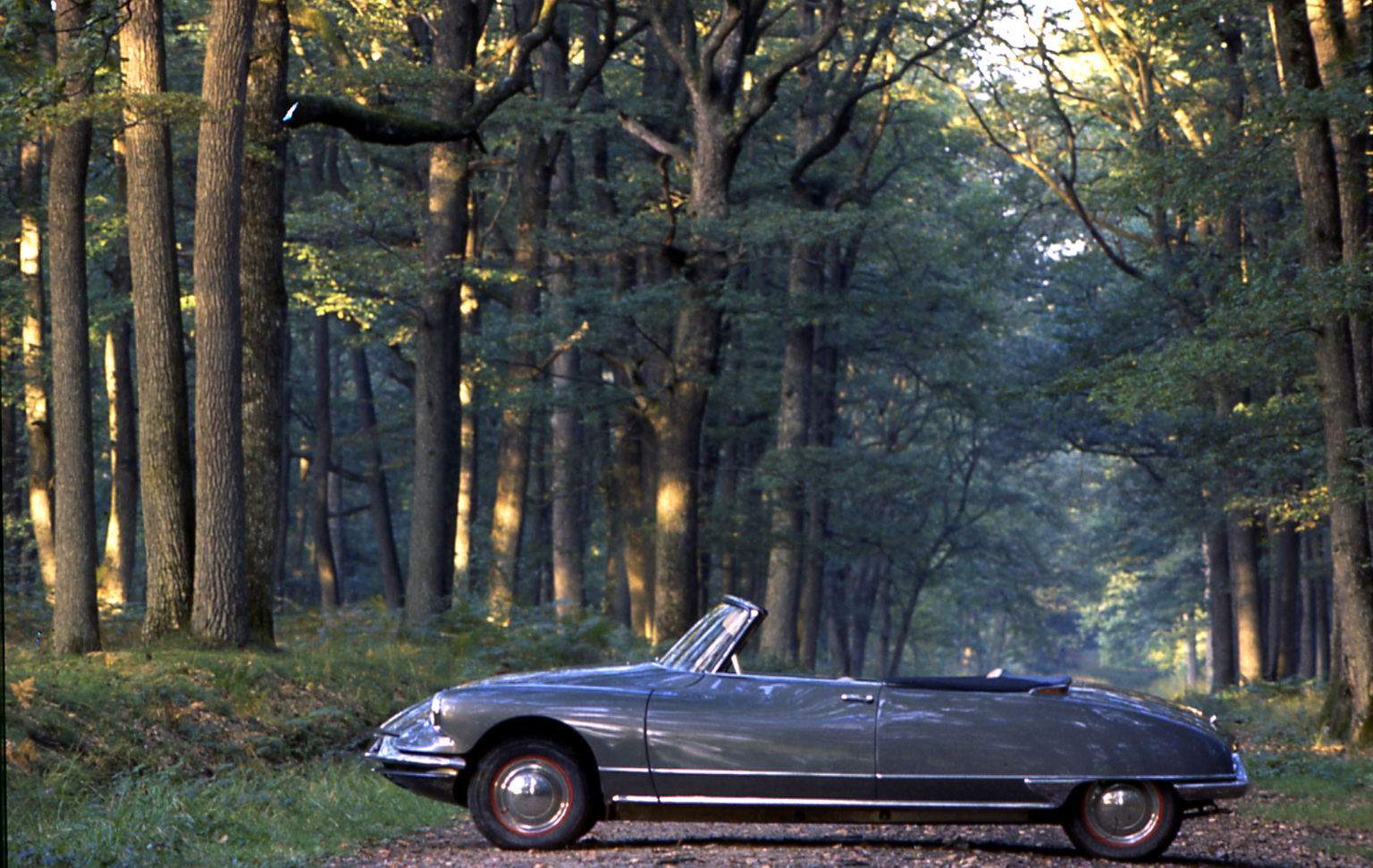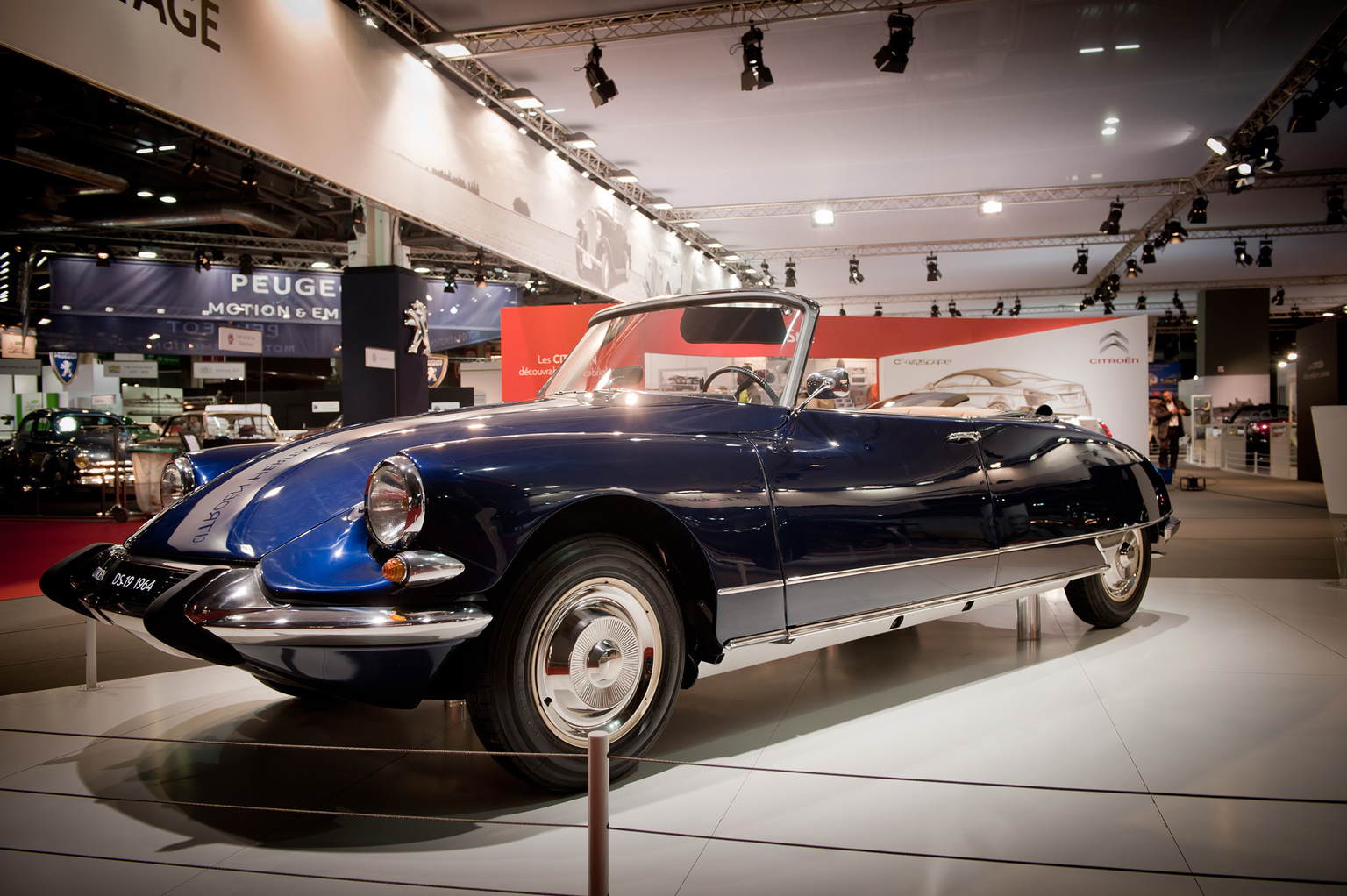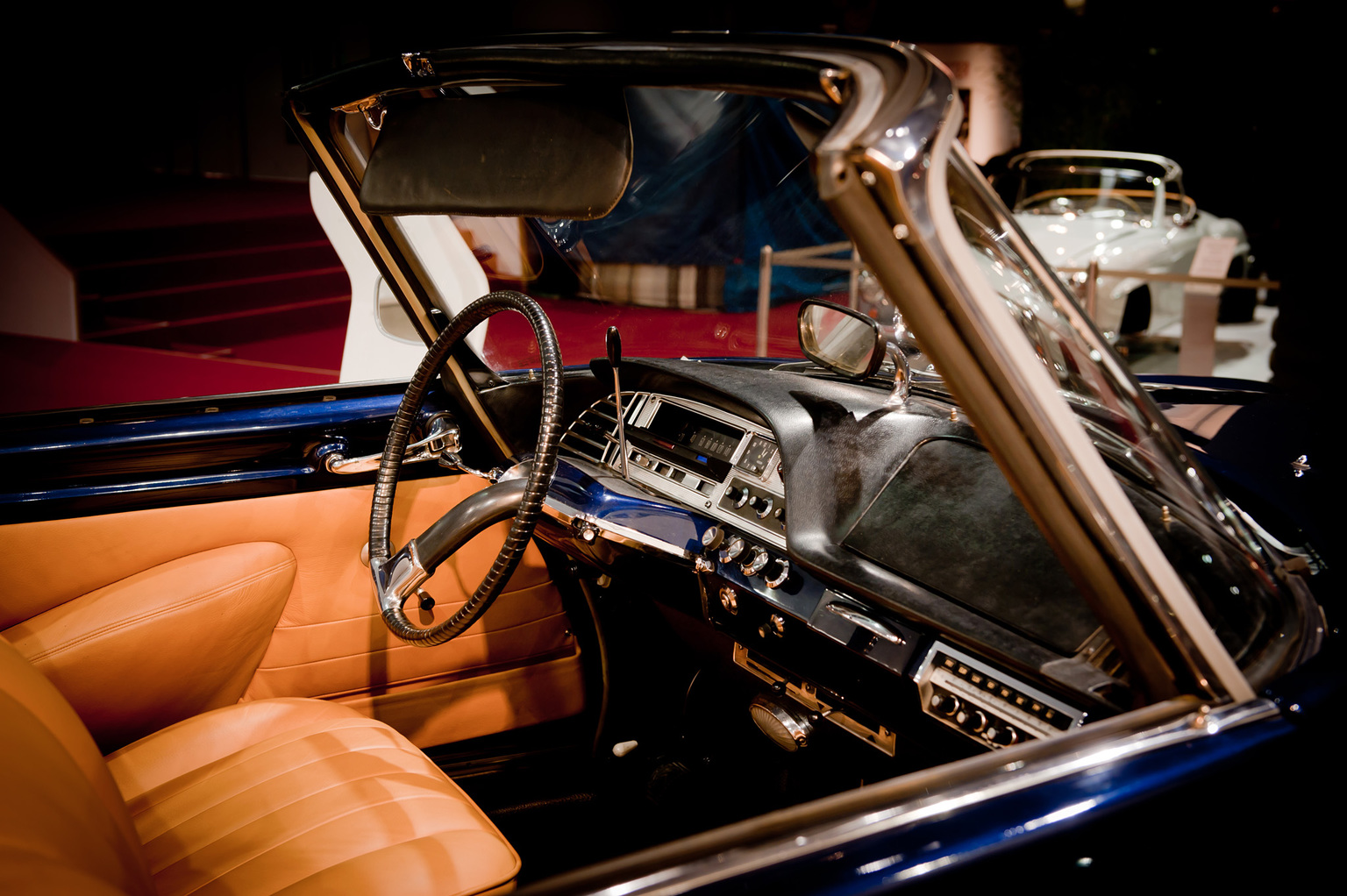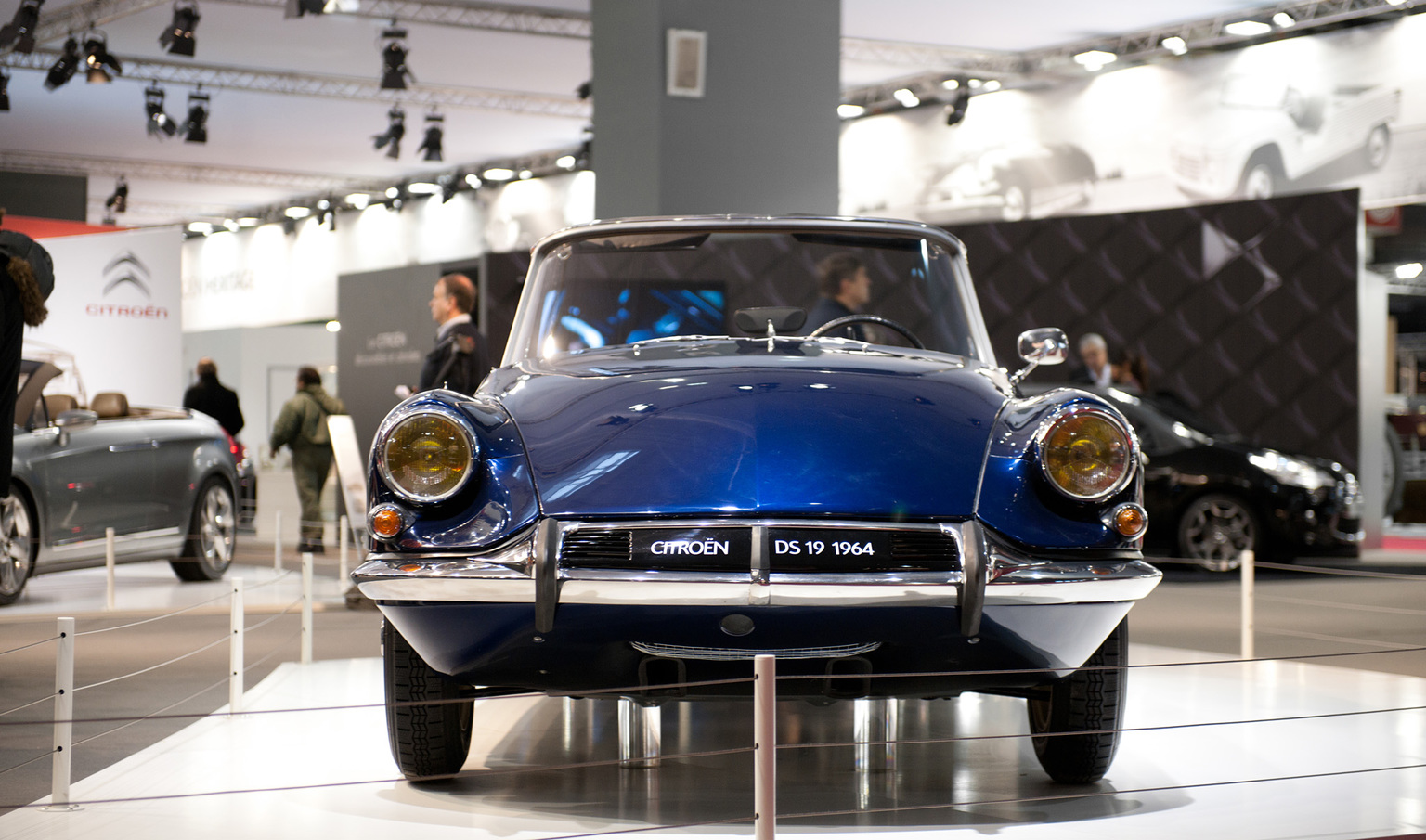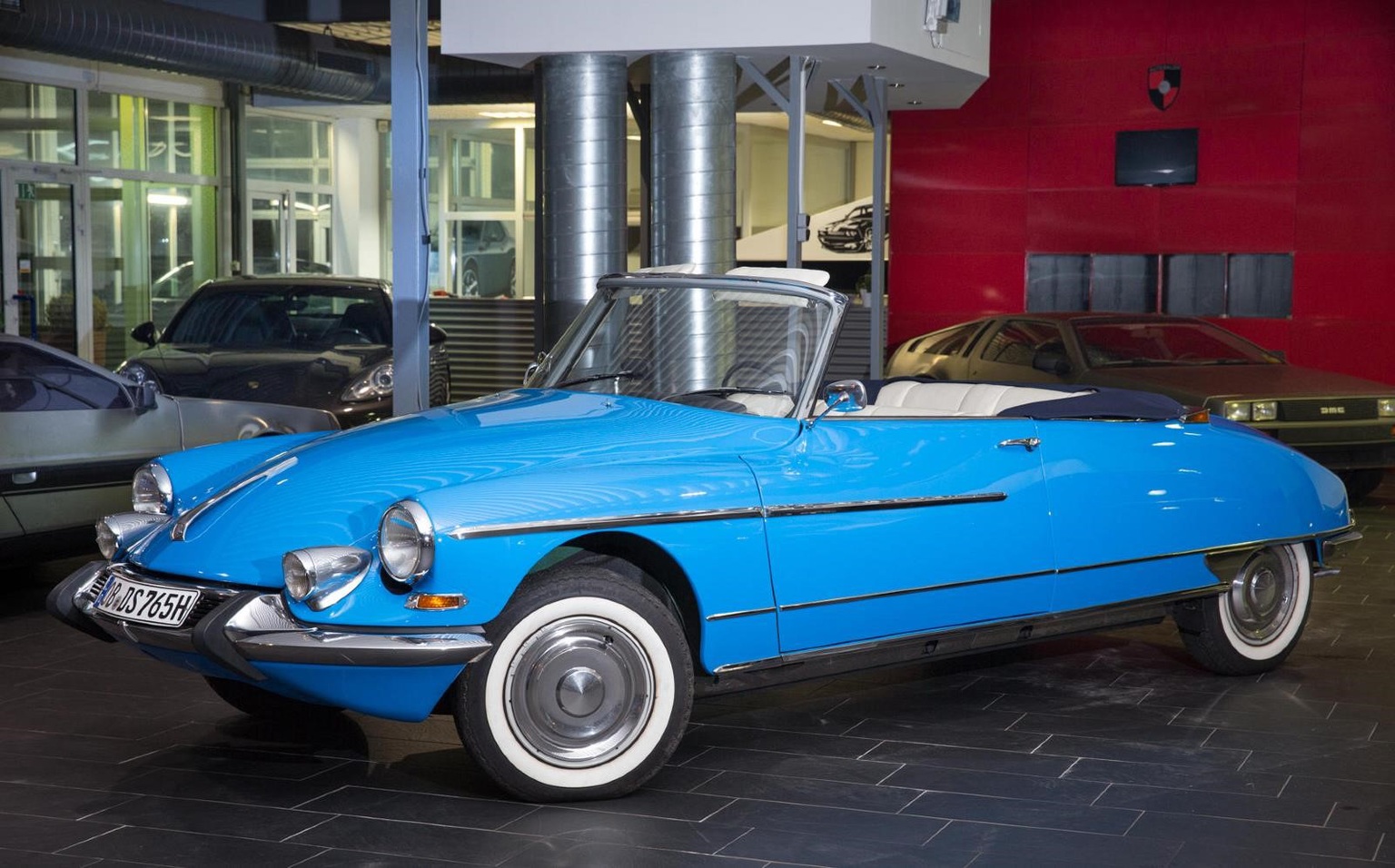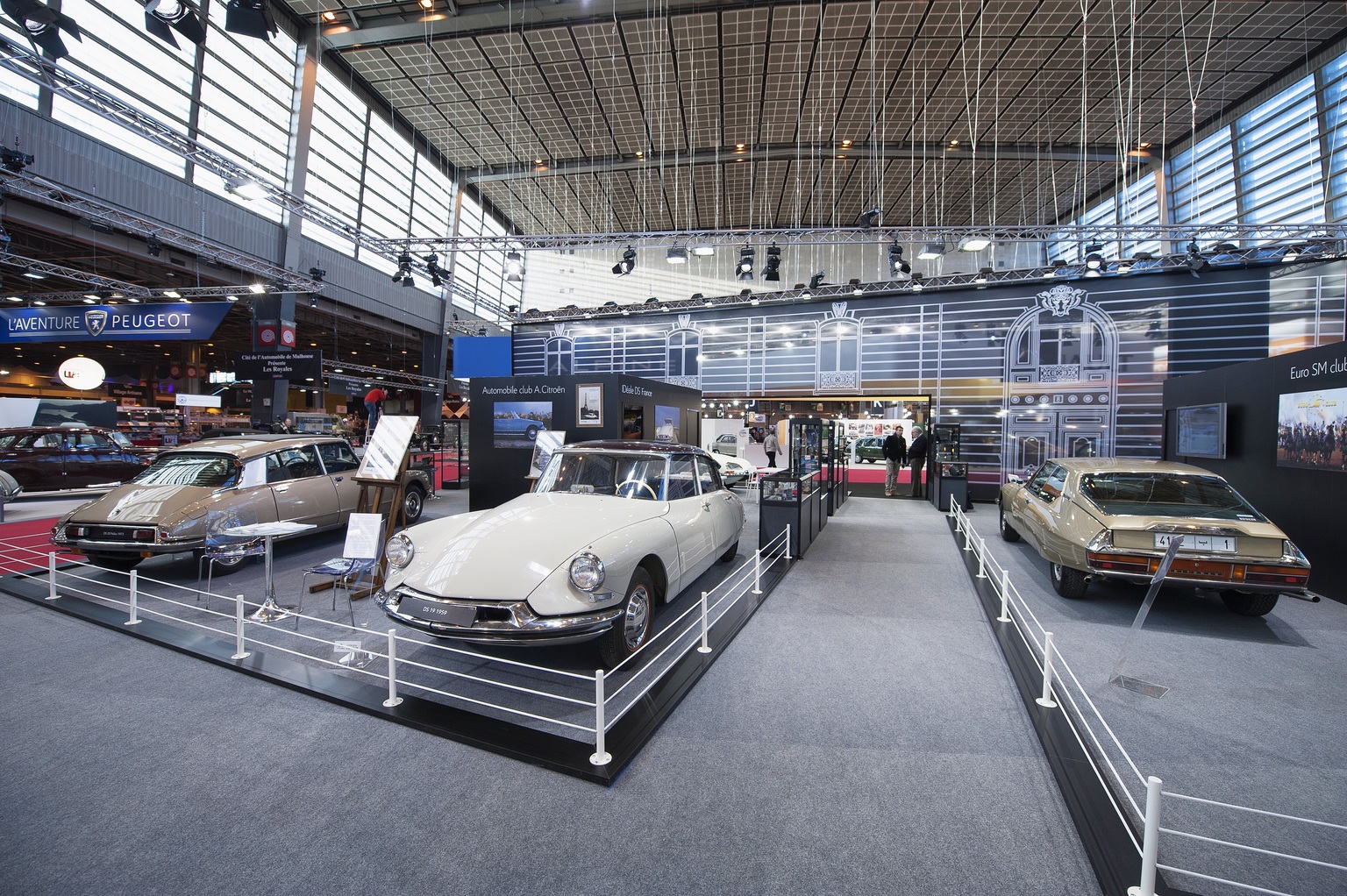1960 Citroën DS 19 Cabriolet
Paris, 1 October 1955 – At the Grand Palais exhibition centre in Paris, a new car explodes onto the automotive scene and is hailed as a sensation by the contemporary press. The DS has arrived. The DS made its world debut at the Paris Motor Show on 6 October 1955. Within 45 minutes, 749 orders had been taken, and by the end of the day, 12,000.
Visitors and journalists from around the world look on in total amazement. A worthy successor to the Traction, the DS was revolutionary both by its aerodynamic styling and its range of new technologies. It almost made all the other cars on show look outdated. The unveiling of the DS was an event that made an impression on all those who were present. Fifty years on, people are still talking about it.
The DS was far more than just a stylistic choice. Its lines were dictated by the technical solutions adopted, while its design reflected a close fit between utility and harmony, functional convenience and visual appeal. Comfort and safety were already key values for Citroën and remain so today.
At the heart of the DS’s many innovations was the high-pressure system made necessary by the hydropneumatic suspension. This system drove the power steering and disc brakes – also used by Jaguar at the time for the Le Mans 24 hour event – as well as the transmission with its automatic clutch, which prefigured the automated gearboxes of today. The DS also used avant-garde materials in its construction, including aluminium for the bonnet and plastic for the roof.
Citroën officially took part in its first international motor sports events with the DS, and quickly built up an impressive track record. Its favourite disciplines were rallies and long-distance raids
This marvel of automotive design was created by two men and their staff teams. Both were originally recruited by André Citroën and designed the Traction in 1934. André Lefèvre was an engineer, while Flaminio Bertoni was a draftsman and sculptor. To create and sculpt the sensual lines of the DS, Flaminio Bertoni worked in close cooperation with engineer André Lefèvre, whose main concern was the aerodynamics.
The DS is unique not only for its exterior styling but also for its distinctive interior. The dashboard is a sculpted work of art. Drivers can access the perfectly integrated controls without taking their hands off the wheel.
The naturally sloping shape lets the light in and accentuates the impression of space. The whole cabin reflects stylists’ efforts to make the car exceptionally ergonomic. The interior door handle, for example, was of totally new design. No need to fumble around to unlock and open the door, the two actions are performed in one smooth movement.
The DS was produced for nearly 20 years and 1,456,115 units were made, with the last unit rolling off the production line in 24 April 1975. A car of revolutionary design, the DS drove the whole automotive industry forward. By making avant-garde technology widely available, it set the tone for a generation of modern vehicles. The DS opened the way to progress and, for this reason alone, it gained universal recognition. Half a century after its birth, the DS stands as a monument of global design.
Story by Citroen, edited by Supercars.net
In Detail
| tags | ds19 |
| submitted by | Richard Owen |
| type | Series Production Car |
| built at | France |
| engine | Inline-4 |
| block material | Cast Iron |
| valvetrain | OHV 2 Valves / Cyl |
| fuel feed | Weber 2-BBL Carburettor |
| displacement | 1911 cc / 116.6 in³ |
| bore | 78 mm / 3.07 in |
| stroke | 100 mm / 3.94 in |
| compression | 7.5:1 |
| power | 55.9 kw / 75 bhp @ 4500 rpm |
| specific output | 39.25 bhp per litre |
| bhp/weight | 61.73 bhp per tonne |
| torque | 173.5 nm / 128 ft lbs @ 3000 rpm |
| body / frame | Steel body with Fibreglass Roof over Steel Frame |
| driven wheels | FWD |
| front tires | 165-400 Michelin |
| rear tires | 155-400 Michelin |
| front brakes | Discs w/Power Assist |
| rear brakes | Discs w/Power Assist |
| steering | Rack & Pinion w/Power Assist |
| f suspension | Constant-Height Hydropneumatic |
| r suspension | Constant-Height Hydropneumatic |
| curb weight | 1215 kg / 2679 lbs |
| wheelbase | 3125 mm / 123.0 in |
| front track | 1500 mm / 59.1 in |
| rear track | 1300 mm / 51.2 in |
| length | 4810 mm / 189.4 in |
| width | 1790 mm / 70.5 in |
| height | 1470 mm / 57.9 in |
| transmission | 4-Speed Homokinetic Transmission |
| gear ratios | 3.24:1, 1.94:1, 1.27:1, 0.85:1 |
| top speed | ~140 kph / 87.0 mph |


